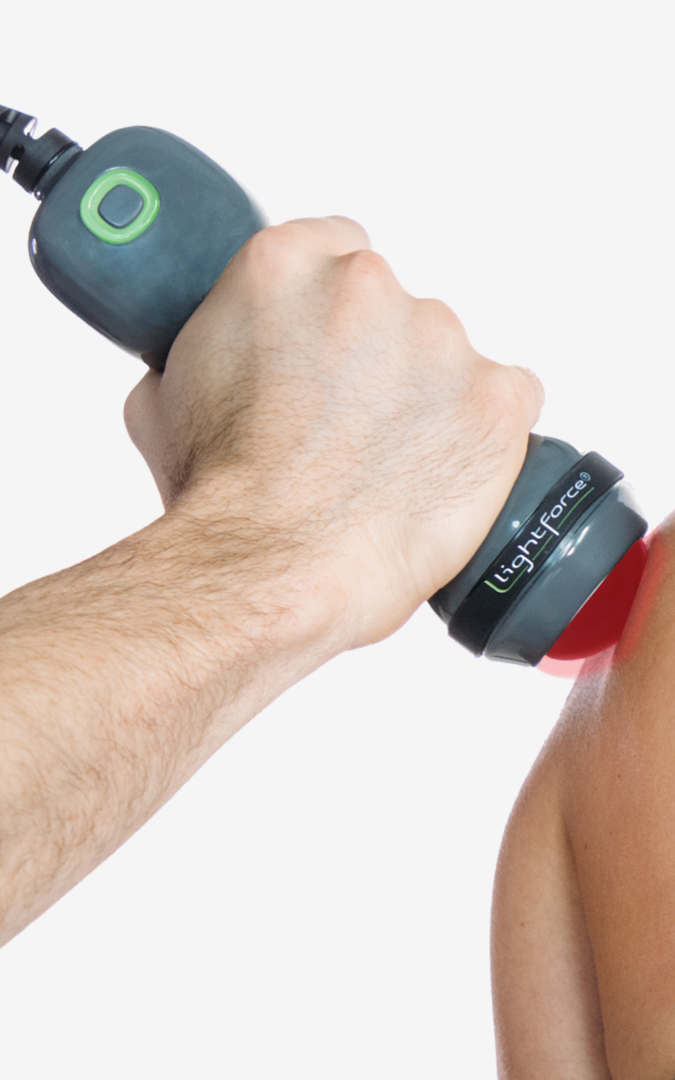The Truth About Class IV Lasers
Contributed by Adam Marmon, Ph.D.
Dangers of the Kitchen Knife
There are a variety of tools that we use in our jobs or everyday life that do not present an immediate risk, but if used improperly could cause damage or harm. The most obvious may be a kitchen knife. We probably won’t let our children play with them, but if and when used properly, they are not dangerous. Similarly, in the clinic, there are various pieces of equipment or devices that are designed to be used one way, but if used improperly can hurt someone. Patients have received frostbite from ice packs or been scalded by a hot pack. Ultrasound can cause severe damage to deeper structures, including bone. Electrical stimulation can severely impact cardiovascular health in a patient with a pacemaker.
Class IV Deep Tissue lasers are devices manufactured to achieve photobiomodulation (PBM). PBM is a cellular level mechanism that results when photons are absorbed by biological tissue. The absorption in turn initiates a photochemical cascade that leads to increased cellular metabolism, reduced pain and inflammation, and other therapeutic effects. There are risks associated with this technology, just like other modalities in the clinic.
Clinical Success
However, clinicians who chose to stay at the forefront of technology and offer state-of-the-art care to their patients have implemented Class IV Deep Tissue lasers into their practice. Time and time again, these clinicians are amazed by the results; achieving improved clinical outcomes with their patients. These clinicians should have received proper training on the utility of their laser and been educated by the manufacturer on how to properly dose their system to achieve the desired clinical effects (PBM). Success is consistently achieved using these higher-powered lasers, especially when combined with good clinical understanding of the patient’s condition and his/her goals, realistic expectations, and an appropriate plan of care.
Intent
Too often there are people less in-the-know who say, “Class IV lasers are dangerous,” “they can damage tissue,” and/or “there is no benefit to higher powered lasers,” or, “patients complain that they are too hot.” It is important to learn the intent of these comments. There are lasers that are designed to be ablative, to cut, damage, or resurface tissue, such as for tattoo removal, hair removal or LASIK surgery. However, Class IV Deep Tissue Therapy Lasers do not and should not cause any damage, when used properly. With that said, improper use of any of a number of household or vocational tools can be dangerous. Heck, you can cut yourself with a kitchen knife if you don’t use it properly.
WOW Effect
Moreover, if you talk to patients who have received deep tissue laser therapy for any of a wide ranging list of conditions, by properly trained clinicians, using a properly manufactured device for therapeutic effects, they report the experience as feeling, “delicious.” Some say it “feels wonderful” or that Deep Tissue Laser Therapy™ “ feels like a warm shower” and these are comments made during a treatment. The best part is the real therapeutic effect when patients say, “WOW, it doesn’t hurt as much,” or “my pain is gone!” Combine the experience with increases in range of motion and improved quality of life, and laser can make a significant impact on a clinician’s overall care for their patients.
Evidence That Speaks for Itself
There is growing support for laser therapy, both in the peer-reviewed, publicly available body of literature, and anecdotally by clinicians across the medical community. Clinicians working in rehabilitation and pain management, or orthopedics and sports medicine are seeing the significant improvements with Deep Tissue Laser Therapy™, especially the higher powered, therapeutic, Class IV Systems which are unlike any other modalities.
Deep tissue laser therapy is both non-invasive and non-pharmacological. When properly used, Deep Tissue Laser Therapy™ is therapeutic and the effects achieved by laser therapy through PBM lead to improved clinical outcomes, reduced pain, reduced inflammation, and a quicker healing process, all allowing the clinician to help the patient achieve an improved quality of life.
Read More Blog Posts
Comments
on The Truth About Class IV LasersHi Warren, thanks for reaching out. First, any pervasive pain in that area needs to be cleared for possible hernia/issues...

Have pervasive groin muscle sprain/pain. Can laser help?
Hi Warren, thanks for reaching out. First, any pervasive pain in that area needs to be cleared for possible hernia/issues in the genital area. The next thing to rule out is that there are no problems with the bone the tendons attach to in the pelvis. That being said, if you do have a diagnosis of muscle strain, the laser should be able to help whether the problem is acute or chronic. It is important that the level of exercise/activity is matched with the level of tissue recovery. A well managed rehab plan that includes laser should help a problem like this.